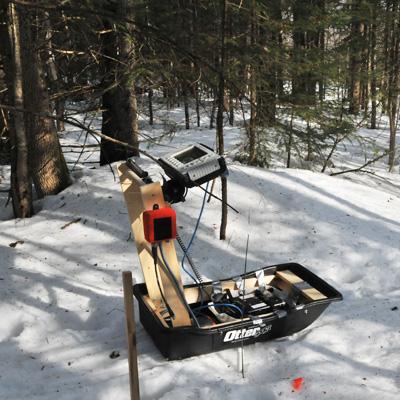Using Ground Penetrating Radar to Characterize Soil Frost for Ecological Applications

Seasonal soil freezing is an important natural disturbance in cold regions such as the Northern Forest. It is expected that future changes in climate will alter the extent of seasonally frozen ground, impacting ecological processes in soil and forests. To better track changes in seasonally frozen ground, scientists need to determine frequency, depth, duration, and intensity of soil frost events. Electromagnetic waves generated by ground penetrating radar (GPR) transmitters have potential to nondestructively detect and quantify seasonal soil freezing in forests.
During winter 2011-2012, NSRC researchers used traditional methods of frost detection (soil temperature sensors (at 14 depths) and 30 frost tubes) at two sites in Vermont and one in New Hampshire to compare with GPR estimates of frost depth using a SIR-3000 GPR system (Geophysical Survey Systems, Salem, NH). Half of the study plots were shoveled free of snow every other week to alter snow depth and frost penetration.
GPR reliably detected frost and delineated its depth beginning at depths of 10 centimeters. Favorable conditions for GPR include bare soil or shallow snow; while standing water, wet snow, and surface thawing interfered with frost detection. Soil frost was detectable through snow less than 30 centimeters deep, but as snow depth increased, the frost signal became faint and interpretation difficult. Removal of snow provides the best detection but significantly alters frost dynamics by deepening frost penetration. GPR’s accuracy of frost depth estimation was good, but site specific corrections may be required. For example, the New Hampshire site's coarse, well-drained mineral soils were not conducive to frost detection.
